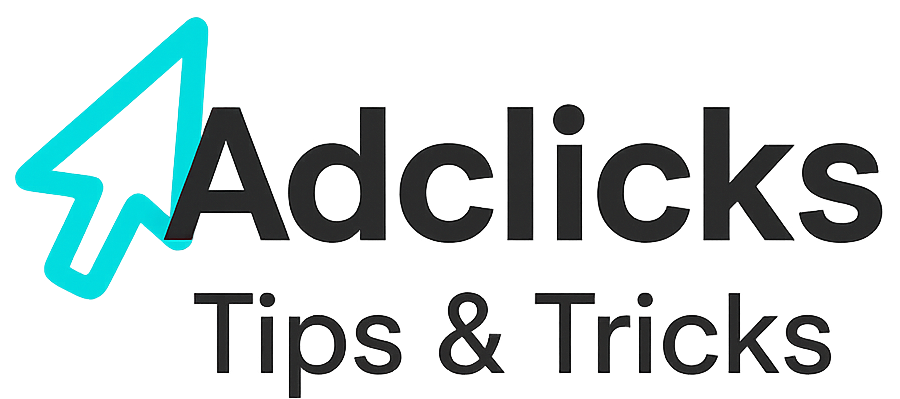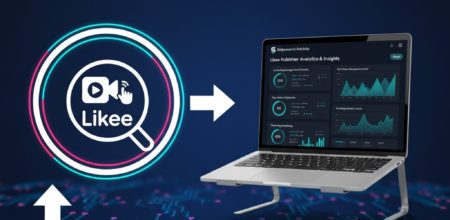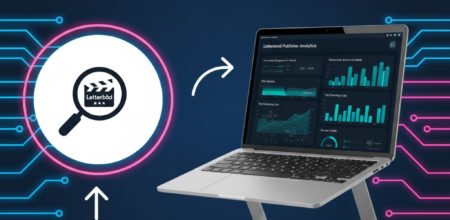The digital marketplace in August 2025 is marked by accelerating innovation, an increasingly competitive battle for consumer attention, and a decisive global move toward transparent, high-relevance advertising. For advertisers leveraging Snipesearch Adclicks and for publishers seeking to monetize their audiences, success this month depends on understanding both the pace of technological change and the behavior of users navigating this crowded space.
This report unpacks the defining digital trends of August 2025, translating raw data into strategic guidance tailored for the Snipesearch Adclicks ecosystem.
Section 1: The Digital Footprint of August 2025
The scale of online expansion shows just how crowded the internet has become, while advertising spend forecasts make clear where businesses are placing their bets.
Every single day in August, around 252,000 new websites came online. By the end of the month, that equated to over 7.5 million new destinations competing for attention. For advertisers, this explosion underscores the necessity of precision. Without advanced targeting tools, campaigns risk getting lost in the endless churn of fresh content. Platforms like Snipesearch Adclicks, which specialize in placing ads where they meet genuine user intent, are increasingly vital for cutting through the noise.
The spending patterns confirm this urgency. Global advertising revenue for 2025 is projected to reach roughly $979 billion, with an overwhelming 73% of that total directed toward digital channels. Digital Pure Players alone are expected to command $715 billion in sales. This reinforces digital advertising’s position as the engine of modern commerce, and further emphasizes the importance of performance-based models such as those championed by Snipesearch Adclicks.
Section 2: The Technology Underpinning the Web
Advertising effectiveness relies not just on audience reach, but on the technology that delivers content to users. August data makes clear that mobile and multi-device compatibility are now fundamental requirements.
Web browsing continues to be dominated by Google Chrome, which holds just over 69% of global market share. Safari remains the second most widely used browser at nearly 15%, followed by Microsoft Edge at 5%. Firefox, Samsung Internet, and Opera trail behind with smaller but still meaningful shares. The conclusion is unavoidable: advertisers cannot afford to ignore Chrome, but achieving scale requires campaigns to work seamlessly across all platforms, especially mobile ones.
Operating system data paints an equally clear picture of a mobile-first world. Android leads with 44% of the global share, followed by Windows at 27% and iOS at 16%. Apple’s desktop systems, OS X and macOS, together represent only around 5% of global usage. Although small communities remain on older versions—Windows 7, 8, and even XP still register measurable traffic—modern platforms overwhelmingly shape the user experience. Advertisers relying on formats such as HTML5 banners or VAST video ads should ensure fallbacks exist, so that creatives render cleanly even on legacy systems.
It is also worth noting that niche browsers, including long-standing ones like Konqueror, continue to serve small but active user groups. Though their share is below 0.3%, their persistence highlights the fragmented nature of the web.
Section 3: Global Engagement and Consumption
How users access the internet—and the conditions under which they engage—provides crucial insight into campaign strategy.
Top Web Browsers (Market Share, August 2025)
Google Chrome retains overwhelming dominance, making multi-device compatibility a non-negotiable requirement for high-reach campaigns.
| Rank | Browser | Market Share (%) |
| 1 | Chrome | 69.23% |
| 2 | Safari | 14.98% |
| 3 | Edge | 5.03% |
| 4 | Firefox | 2.26% |
| 5 | Samsung Internet | 1.97% |
| 6 | Opera | 1.85% |
Note: While more browsers exist, comprehensive data often groups lower-share entries into “Others.”
Top Operating Systems (Market Share, August 2025)
The OS market reflects the “mobile-first” reality, with Android commanding the largest global share, followed by Windows and iOS.
| Rank | Operating System | Global Market Share (%) |
| 1 | Android | 44.44% |
| 2 | Windows | 27.45% |
| 3 | iOS | 15.94% |
| 4 | Unknown/Other | 4.6% |
| 5 | OS X | 3.42% |
| 6 | macOS | 1.88% |
In terms of device vendors, Apple holds the largest global share at 25.7%, closely followed by Samsung at 21%. Together with Xiaomi, Vivo, and Oppo, these five companies account for the majority of global mobile access. For advertisers, this creates clear pathways for targeting by screen size, operating system, and the demographics typically associated with each brand’s user base.
Most Used Mobile Devices (Vendor Market Share, August 2025)
Targeting by device vendor is highly effective, allowing advertisers to align creative with specific screen sizes and user demographics tied to these manufacturers.
| Rank | Mobile Vendor | Market Share (%) |
| 1 | Apple | 25.71% |
| 2 | Samsung | 20.96% |
| 3 | Xiaomi | 10.82% |
| 4 | Vivo | 6.74% |
| 5 | Oppo | 5.88% |
Connectivity levels further refine this picture. In May 2025, Singapore once again led the world with fixed broadband speeds averaging 372 Mbps, followed by France, the UAE, Hong Kong, and Chile. Within the United States, Austin achieved the fastest fixed speeds at 344 Mbps, while San Antonio topped the chart for mobile speeds with nearly 250 Mbps. These conditions create fertile ground for high-impact formats such as interactive video ads, which rely on fast connections to deliver a seamless experience.
Fastest Connections & Cities of Note
Fast connectivity is a key indicator of high-value, high-engagement traffic. Countries leading in fixed broadband speeds represent environments where rich media (video, interactive ads) will perform seamlessly.
| Rank | Country (Fixed Broadband Speed, May 2025) | Speed (Mbps) |
| 1 | Singapore | 372.02Mbps |
| 2 | France | 315.38Mbps |
| 3 | UAE | 314.49Mbps |
| 4 | Hong Kong | 310.24Mbps |
| 5 | Chile | 297.75Mbps |
Cities of Note (Fastest U.S. Speeds): Austin, TX, recorded the fastest median fixed download speed at 344.46 Mbps , while San Antonio, TX, led major cities in mobile download speed at
The countries with the highest number of internet users also represent the largest pools of potential audience reach.
Countries with Highest Bandwidth Consumption (by internet users):
- China – 1.1 Billion Users
- India – 881.3 Million Users
- United States – 311.3 Million Users
- Indonesia
- Pakistan
- Brazil
- Nigeria
- Russia
- Bangladesh
- Japan
Campaigns designed to capture share in these markets must also reflect linguistic diversity.
Top 10 Internet Languages (August 2025):
- English
- Chinese
- Spanish
- Arabic
- Indonesian/Malaysian
- Portuguese
- French
- Japanese
- Russian
- German
Content consumption reflects another defining trend: the dominance of video. More than three-quarters of consumers now prefer short-form video when exploring new products. Generative AI has accelerated production, enabling brands to release content at a pace once unimaginable, but this very flood of content makes authenticity a competitive differentiator. Many brands are now choosing disruption over consistency, deliberately experimenting with style and tone to capture attention. Increasingly, they are also meeting audiences where conversations happen—jumping into comment threads, creator spaces, and social discussions to extend reach.
Most Popular Content Trends
The content landscape is being reshaped by AI and a shift toward creative disruption:
- Video Dominance: 78% of consumers prefer short video content to learn about new products.
- Generative AI is Operational: Generative AI is now “officially on the team” , accelerating marketing content creation and demanding greater authenticity from brands.
- Creative Disruption: Brands are intentionally “ditching brand consistency to push creative boundaries”.
- Outbound Engagement: Brands are engaging in social conversations (creators’ comments) to “pick up new audiences”.
Section 4: Strategic Action for the Snipesearch Ecosystem
For advertisers using Snipesearch Adclicks, the August 2025 data translates into a dual imperative: optimize for mobile and video, while investing ad spend where intent and context are strongest.
Snipesearch Adclicks’ strength lies in request marketing—serving ads based directly on user intent rather than invasive behavioral profiling. This makes careful keyword selection more important than ever. Exact and phrase matching ensure ads remain visible even as generic AI-driven content floods the web. Campaigns should prioritize targeting Apple, Samsung, and Xiaomi users, who together make up nearly 60% of the global mobile market. Creative assets must be lightweight and fast-loading to maximize conversions on mobile devices.
Video advertising represents another major opportunity. With 78% of users preferring video, advertisers should direct budgets toward CPV campaigns, taking advantage of the platform’s cost-effective minimum of $0.005 per view. Interstitial and VAST video formats perform particularly well in high-speed markets such as Singapore and the UAE. Meanwhile, city-level targeting enables advertisers to zero in on U.S. hotspots like Austin and San Antonio, where connectivity ensures a flawless user experience. Language targeting further strengthens relevance, allowing ads to be tailored to global audiences in Chinese, Spanish, Arabic, and beyond.
Cost efficiency remains a hallmark of Snipesearch Adclicks. Minimum bids of $0.01 for CPC and CPM allow advertisers to test multiple regions with minimal financial risk, while collecting data to refine strategy. Text ads, often outperforming banners in click-through rates, represent a practical way to stretch budgets further.
For publishers, the message is equally clear. Success depends on aligning content with authentic audience expectations while optimizing for monetization. Video-first strategies enable the use of high-yield CPV formats, with publishers earning 50% of advertiser spend. Clean, fast-loading layouts protect revenue by ensuring ads display correctly across both modern and legacy systems. Topic-focused pages increase contextual ad relevance, raising click-through rates and CPM performance. Above all, publishers should resist the temptation to flood sites with AI-generated content. Authentic, original work builds trust, encourages longer user sessions, and directly translates into stronger ad revenue.
Strategy for Snipesearch Adclicks Advertisers
The core advantage of Snipesearch Adclicks is its focus on request marketing (matching ads to immediate user intent) without invasive behavioral targeting. Advertisers should use the newly available data to refine campaign settings and maximize ROI:
- Prioritize Mobile and Device Targeting: Given that Android and iOS command over 60% of the OS market and that traffic is highly concentrated across five major mobile device vendors , use Device Targeting to create mobile-specific creatives. Target campaigns to Apple, Samsung, and Xiaomi users to capture nearly 60% of the mobile market. Ensure landing pages are optimized for quick mobile load times, essential for conversion.
- Capitalize on Video and Rich Media: With video content preferred by 78% of users , allocate budgets to CPV (Cost Per View) Video Ads on the platform. The minimum CPV rate of $0.005 offers an extremely cost-effective way to get high-impact, full-screen visibility (via Interstitial or VAST formats) in high-speed markets like Singapore and the UAE.
- Refine Geo and Language Targeting: Utilize the City Level Targeting feature to focus on fast-connection cities like Austin or San Antonio for rich-media campaigns, ensuring a seamless user experience. Leverage the Language Targeting option to create specific text/image ads for the top global languages (Chinese, Spanish, Arabic, etc.).
- Maximize Budget Efficiency with CPM/CPC: Snipesearch Adclicks features accessible minimum bids: $0.01 minimum for CPC and $0.01 minimum for CPM. Advertisers can use these low entry points to establish a presence and collect performance data across multiple regions without excessive risk, leveraging the cost-effectiveness of text ads which often yield higher CTR than banners.
- Focus on Keyword Quality (The AI Challenge): While generative AI simplifies content creation , Snipesearch Adclicks rewards specific, high-relevance keyword targeting. Use Exact Matching and Phrase Matching to cut through the noise generated by generic AI content. Your ad copy and keywords must naturally match user intent, as the platform does not rely on third-party behavioral tracking.
Content and Monetization for Publishers
Publishers in the Snipesearch Adclicks network must respond to the data by focusing on authentic, high-quality, and strategically monetized content:
- Video-First Content Strategy: Align content production with the user demand for short video, enabling the use of high-yield VAST/HTML5 Video Ad formats (CPV). Publishers receive a generous 50% profit share on CPV ads.
- Clean Layouts for Legacy & Mobile: Maintain clean code and layout to ensure pages load quickly and render correctly across the vast array of devices and even legacy operating systems still reporting usage (Win XP, Win 7). This ensures maximum ad viewability and protects CPM revenue.
- Leverage Contextual Relevance: Focus content creation on a single topic per page. This enhances contextual targeting for advertisers, leading to higher-relevance ads being served on your site and improving CTR and CPM yields.
- Optimize for Long-Term CPM/CPC: Place text and image ads (which publishers earn 50% of the advertiser’s CPC bid and 45% of the CPM bid) intelligently. The CPM model, in particular, rewards sites with engaged readers and high viewability over click volume, providing a steady revenue stream.
- Embrace Authenticity over AI Volume: While AI tools can assist, remember that audiences are demanding greater authenticity. Publishers should create original, compelling content. Use keyword tools to inform topics but focus on natural, valuable writing that encourages long sessions, translating directly into higher impression revenue.
August 2025’s digital landscape leaves little room for ambiguity. The future is mobile, video-led, and authenticity-driven. For advertisers on Snipesearch Adclicks, opportunity lies in pairing low-cost CPV and CPC campaigns with precision tools for device, city, and language targeting. For publishers, growth depends on building trust through original content and optimizing site experiences for maximum ad viewability. In a marketplace defined by relentless expansion and disruptive creativity, agility and relevance will be the cornerstones of success in the months ahead.




